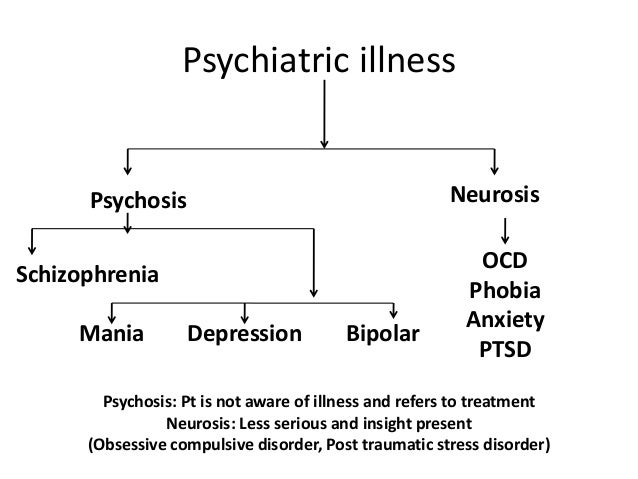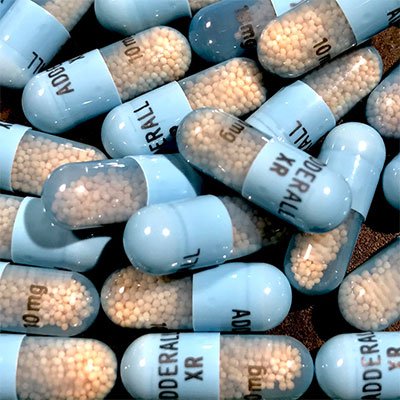Healing vs cure
Being Cured Vs. Being Healed
By: Pine Rest Staff
By Rev. Kathy Bird DeYoung
Spirituality often becomes more important to us in times of tragedy, loss, suffering and illness because it connects us to both our higher power and those around us, helps us to find meaning and purpose, and brings us hope and healing. Sometimes, these very same conditions can make us question ourselves, our spirituality and all we know. In our
Spirituality and Emotional Health blog series, our clinicians and chaplains explore what it means to be spiritual beings, how it affects our interactions with the world and how we sometimes struggle with and question our own spirituality.“I will restore faith unto thee, and I will heal thee of thy wounds.”
–Jeremiah 30:17
When we struggle with an illness or infirmity, usually what we want most is healing. In our society when we think of being healed we usually are looking for a cure that restores us to the physical health and wholeness we had previously.
I came across a quote recently that clarifies the difference between cure and healing:
“A
cure signified the banishment of physical illness, but a healing could mean not just a physical cure, but a repairing and strengthening of the mind and spirit to improve the quality of life even when no physical cure was possible.”
—Susan Howitch, Absolute Truths
If we focus exclusively on being cured – on the disappearance of illness – then we may miss the healing God has brought or is bringing to our loved one or us.
I have a close friend who has a degenerative muscle disorder in her legs. For the sake of this blog, I’ll refer to her as Sage. When I first met Sage, several years ago, she had unusual but minor leg weakness. She only needed to use a walking stick in the winter to cope with the chronic weakness in her legs.
At that point, she was looking for a cure. Actually, she started out first just looking for a diagnosis so that she could be on her way toward a cure. She endured test after painful test. She saw specialist after specialist. None of these could tell her why she had the deteriorating leg weakness. They were only able to rule out muscular dystrophy and muscular sclerosis among other illnesses and syndromes. They could only tell her what she did not have. Her leg muscles continued to atrophy. Now, she is wheelchair bound.
She endured test after painful test. She saw specialist after specialist. None of these could tell her why she had the deteriorating leg weakness. They were only able to rule out muscular dystrophy and muscular sclerosis among other illnesses and syndromes. They could only tell her what she did not have. Her leg muscles continued to atrophy. Now, she is wheelchair bound.
I also know another woman whom I will refer to as Kendall. Kendall was also diagnosed with a debilitating illness for which there is no cure. Kendall is now almost 40 years old and lives with her mom. Kendall has allowed her illness to dis-able her. She is listless and wonders about the meaning of her life. I bring up Kendall not to be judgmental but rather to highlight how her attitude toward her disability has dis-abled her.
In contrast, Sage has not let her disability dis-able her. She persevered through the disability. First she graduated from college then she obtained a master’s degree in counseling. Upon becoming a licensed counselor, she opened her own counseling practice. After several years in private practice she also now teaches counseling in a university. In the midst of this she also fell in love and was married. Sage has not experienced a cure, but she continually experiences healing both personally and professionally. Her two professions also allow her to help individuals and families experience healing and teach future counselors how to participate in the healing process.
Upon becoming a licensed counselor, she opened her own counseling practice. After several years in private practice she also now teaches counseling in a university. In the midst of this she also fell in love and was married. Sage has not experienced a cure, but she continually experiences healing both personally and professionally. Her two professions also allow her to help individuals and families experience healing and teach future counselors how to participate in the healing process.
What’s the difference between Sage and Kendall? In one word, the difference is faith.
Kendall and her parents are atheists. They do not believe in any type of higher power. The lack of faith limited Kendall’s perspective. Even though a cure may not have been possible, healing was and still is possible for Kendall with faith.
Sage, on the other hand, found healing in and through her relationship with God. Even though she did not experience a cure, Sage experienced healing. God’s healing. It is God’s healing that helped Sage integrate her disability into her life in order to help others. Instead of becoming dis-abled, Sage became en-abled through her faith and she is en-abled to bring healing.
God’s healing. It is God’s healing that helped Sage integrate her disability into her life in order to help others. Instead of becoming dis-abled, Sage became en-abled through her faith and she is en-abled to bring healing.
Rev. Dr. Martin Luther King said “As my sufferings mounted I soon realized that there were two ways in which I could respond to my situation – either to react with bitterness or seek to transform the suffering into a creative force. I decided to follow the latter course.” This is what Sage has done with her life, also.
It is VERY painful when we do not experience the cure we are seeking. However, if we’re able to perceive the healing, in the midst of our illness or circumstances, we will continue to find hope for the future. We will find healing AND like Sage, we may even be able to help others experience healing.
Related Articles
Perhaps you’ve heard that being more grateful can help you have a more positive mood. In fact, recent research has shown that grateful people tend to be happier, healthier and more fulfilled. Being grateful helps us deal with stress and be our…
In fact, recent research has shown that grateful people tend to be happier, healthier and more fulfilled. Being grateful helps us deal with stress and be our…
Relationships are often strained by stressful, emotional events. Bob Vandepol, MSW, reviews how taking inventory of your emotional intelligence can help ease the strain on relationships.
Six million men grapple with depression every year, and suicide is currently the seventh leading cause of death for men. When it comes to their health, most men think of their physical health…like enduring a prostate exam. What they…
Article Categories & Tags
THE LATEST NEWSROOM CONTENT DELIVERED TO YOUR INBOX
Subscribe to Mental Health Matters
Why Knowing the Difference Between Curing and Healing Matters
By Leonard Berry | Wednesday, May 15, 2019
I’ve recently been giving a lot of thought to the difference between curing and healing. They’re related concepts, of course. Healing, however, can come in many forms other than cure.
They’re related concepts, of course. Healing, however, can come in many forms other than cure.
Let’s say a patient, who has a longstanding relationship with his primary care physician (PCP), one day notices a small bulge in his groin area. He searches on the internet and starts to suspect that he has cancer. He’s frightened.
The first appointment he can get with his PCP is three days later. While he waits for the day of his office visit, the patient loses sleep, isn’t as focused as he should be at work, and is distracted at home with his family. He doesn’t tell his spouse what’s bothering him.
On the day of the appointment, the doctor does a physical exam. “You have a small hernia,” she says. “I’m not concerned about it now. If it grows, we may have to deal with it surgically, but for the time being we can just watch it. How does that sound?”
Suddenly, the patient doesn’t have cancer anymore. He never did, of course, but for three long, anxious days he thought he might until a doctor was able to assuage his fears.
When a clinician helps ease a patient’s mind — with accurate information, realistic expectations, and a humane touch — cure may not be involved, but healing can still take place.
False Hope Can Do Harm
It is widely acknowledged that hope is an important part of healing. In fact, clinicians are often concerned that telling patients who have an advanced illness the full truth about their condition will rob them of their hope. However, hope for a cure is not the only kind of hope clinicians can offer.
In a recently published article, (“Finding Hope and Healing When Cure Is Not Possible”), my coauthors and I refer to hope for a cure (or for future remission) as focused hope because it’s directed expressly at putting a stop to the illness.
But what if cure or remission is not possible? Clinging to the focused hope paradigm in such situations can give a patient false hope. That false hope may then lead to overtreatment.
Providing treatment that is not needed out of a desire to offer focused hope is especially problematic for patients with incurable conditions who are nearing the end of life. Consider a patient with late-stage cancer. Instead of using the time she has left to do what matters most to her — such as being with family and friends, traveling, putting her affairs in order, and even repairing broken relationships — she may spend her remaining days undergoing toxic treatments, with sometimes debilitating side effects, and getting secondary illnesses. Repeated visits to the emergency department, hospitalizations, and ICU stays are common in such circumstances.
Another Kind of Hope
My coauthors and I discuss an alternative approach: intrinsic hope. Rather than focusing on ending an illness, intrinsic hope centers on the present day.
For example, I can hope that my pain will be managed well enough to allow me to walk my dog in the park today. I can hope that I will go home from the hospital with my family today. I can hope I’ll see my grandchild today.
I can hope I’ll see my grandchild today.
Intrinsic hope centers on bringing inner peace to your life. As we say in our article, “Intrinsic hope replaces unrealistic expectations for recovery with a more profound and resilient emotional foundation.”
Being Emotionally Present Heals Patients — and Clinicians
Offering hope and healing involves the spiritual and emotional aspects of care. Some clinicians may defer these (sometimes difficult) discussions about hope with their patients to social workers, clergy, or palliative care or hospice professionals. I believe, however, that all clinicians need to understand the different dimensions of hope and healing. After all, much clinical care occurs long before hospice or palliative care is indicated. Clinicians will face many instances when cure is not possible and focused hope is false.
Ignoring or devaluing these kinds of skills harms not just patients, but also clinicians. When clinicians actively distance themselves from the emotional and spiritual aspects of care, finding personal reward in their work can be more elusive. I believe that shutting yourself off from your own feelings — essentially, dehumanizing yourself — is contributing to the burnout epidemic in health care today.
I believe that shutting yourself off from your own feelings — essentially, dehumanizing yourself — is contributing to the burnout epidemic in health care today.
Most clinicians did not go into health care, after years of training and hard work, to distance themselves from their patients and provide care as a robot would. They wanted to help people, to heal them. Consider this excerpt from our published article on the topic:
Compassionate clinicians feel their patients’ pain. The literal meaning of compassion is “suffer with.” But in highly charged situations, clinicians have a choice: either block out the emotional impact for the sake of self-protection (which sensitive parents and patients may perceive as abandonment) or allow emotional connection. Total immersion in patients’ . . . anguish isn’t necessary or desirable. Tearing the clinician’s own heart out is not the purpose of this exercise — empathy is.
Being a caring and compassionate health care provider today is not easy. There is no checklist to confirm that you’ve helped a patient move from focused hope to intrinsic hope. Clinicians and patients instead must build a trusting, dynamic partnership that involves pooling their knowledge: the clinician’s expertise and experience with the patient’s self-knowledge. The best health care outcomes — and the greatest healing — arise from that collaboration.
There is no checklist to confirm that you’ve helped a patient move from focused hope to intrinsic hope. Clinicians and patients instead must build a trusting, dynamic partnership that involves pooling their knowledge: the clinician’s expertise and experience with the patient’s self-knowledge. The best health care outcomes — and the greatest healing — arise from that collaboration.
Leonard L. Berry, PhD, MBA, is an IHI Senior Fellow and a professor in Mays Business School at Texas A&M University. He studies service improvement in cancer care.
Tags: Person- and Family-Centered Care, Joy in Work, Communication, Conversation Ready, End-of-Life Care
first < > last
-
IHI Forum 2022
December 4–7, 2022 | Orlando, FL, USA December 13–15, 2022 | Online
The IHI Forum is a four-day conference that has been the home of quality improvement (QI) in health care for more than 30 years.
 Attend this year's conference in Orlando, FL, USA, or online.
Attend this year's conference in Orlando, FL, USA, or online.
-
Creating Workforce Joy and Well-being
Begins March 8, 2023 | Online Course with Coaching
To help reverse the worrying trend of burnout among health care professionals, IHI developed the Creating Workforce Joy and Well-being, a 12-week online course full of new thinking, resources, strategies, frameworks, and solutions that will help workforces truly thrive.
-
Leadership for Workforce Well-being Professional Development Program
Begins March 27, 2023 | Online and in-person | Boston, MA
High-performing health care organizations know that they must make the well-being of their workforce a top priority.
 The Institute for Healthcare Improvement’s Leadership for Workforce Well-being Professional Development Program will help you gain the skills, tools, and methods to be the highly trained and specialized leader of workforce well-being that your organization needs.
The Institute for Healthcare Improvement’s Leadership for Workforce Well-being Professional Development Program will help you gain the skills, tools, and methods to be the highly trained and specialized leader of workforce well-being that your organization needs.
| Average Content Rating | ( user) |
Did you find this user comment useful? people found this user comment useful.
| |||||||||||||||||||||||
| |||||||||||||||||||||||
| |||||||||||||||||||||||
practical advice - how to treat scabies in children and adults, drugs and folk remedies
{{if type === 'partner-stocks'}}
{{/if}}
{{/if}} {{each list}}${this} {{if isGorzdrav}}
Delete
{{/if}}
{{/each}} {{/if}} Search by drug, disease, substance: DERMAKOSMETIKA, SOLGAR, NaturAge, Otrivin,Home
Articles
Treatment of scabies
Close contact between people increases the risk of transmission of scabies. This is a disease that mankind has not been able to defeat for hundreds of years. Modern medicine offers effective drugs that suppress reproduction and destroy the pathogen. The main thing is to apply them correctly and not forget about preventive measures.
This is a disease that mankind has not been able to defeat for hundreds of years. Modern medicine offers effective drugs that suppress reproduction and destroy the pathogen. The main thing is to apply them correctly and not forget about preventive measures.
What causes scabies
Scabies is caused by the tiny skin mite Sarcoptes scabiei. It is a parasite that prefers to live in human skin. But there are cases of infection from pets when they act as a carrier of a tick.
Infection occurs through contact with open areas of the skin of a sick and healthy person. For this, a handshake, joint games with children are enough. Adults become infected during sexual intercourse, and co-sleeping in bed often leads to transmission of the pathogen.
The low infectivity of the scabies mite is associated with its characteristics. Its females are inactive during the day, pathogens penetrate into the stratum corneum of the skin of a new host in about 30 minutes, so prolonged skin-to-skin contact is needed. The tick is sensitive to external conditions. If it is placed on a surface with a temperature of 21 ° C and a humidity of no more than 80%, it will die in a day. But the warmer and drier the air, the faster the tick dies. Therefore, the transmission of the pathogen through household items is also rare.
The tick is sensitive to external conditions. If it is placed on a surface with a temperature of 21 ° C and a humidity of no more than 80%, it will die in a day. But the warmer and drier the air, the faster the tick dies. Therefore, the transmission of the pathogen through household items is also rare.
Scabies mite goes through all stages of development in the host organism. Most often, females are involved in infecting a new person. Males die immediately after their fertilization. Thanks to proteolytic enzymes in saliva, mites dissolve the stratum corneum of the skin and form their passages in it. Every day in the evening and at night, the female advances by 2-3 mm. This causes a sensation of severe itching, and the reaction to waste products manifests itself in the form of a rash. At night, the female can come to the surface of the skin, crawl to a new part of the body or to another person.
In her burrows, the female lays 2-3 eggs per night, from which larvae hatch after 2-4 days and begin to form new burrows. The full development cycle of an adult scabies mite takes 10-14 days.
The full development cycle of an adult scabies mite takes 10-14 days.
According to statistics, adolescents who live and communicate in close communities are most often infected. Therefore, scabies is common among summer campers living in student dormitories. A child can get scabies when visiting a kindergarten. The disease is common in children's boarding schools. The reservoir for the pathogen is often nursing homes. In older age, the disease may occur with less severe symptoms, so there is no treatment, but the risk of infection remains.
Symptoms of scabies
There is no incubation period before the first symptoms of scabies appear when infected by adult females. Skin itching can appear as early as 1-2 weeks after the primary infection if tick larvae have come into contact with the skin.
You can diagnose the disease yourself if you compare what scabies looks like on the skin with a description or photo. The favorite localization of the tick on the body is as follows;
- interdigital spaces;
- wrists;
- drumsticks;
- armpits;
- buttocks;
- loin and waist;
- genital skin;
- head, skin behind the ears.

The moves made by the female look like thin whitish stripes. They rise slightly above the surface of the skin. The length of each move is not more than 1 cm. Sometimes they have lateral branches that are made by male ticks. At the blind end of the passages, the female is hiding, which looks like a black dot on the surface of the skin.
In the initial stage, the rash is not pronounced. Later, when an allergic reaction develops to the tick, its excrement and eggs, red spots appear on the skin, resembling hives. They may be irregular in shape, merge into larger spots. If scabies is not treated, small bubbles with liquid contents appear at the site of the rash. Over time, they can grow in size. In severe forms of scabies, the rash can cover the entire body, but rarely extends to the scalp, although dermatologists detect hair lesions in 30% of patients.
In conditions of insufficient immunity or with some individual characteristics of the skin, the Norwegian form of scabies develops. It looks like psoriasis-like dermatitis, which forms scales on the surface of the inflamed skin. Different parts of the body, subungual zones can quickly be involved in the pathological process, frequent localization is the head, neck and buttocks. A person with this form of scabies is very contagious, at the same time several million ticks can be on his body, while under normal conditions - up to 15 pathogens.
It looks like psoriasis-like dermatitis, which forms scales on the surface of the inflamed skin. Different parts of the body, subungual zones can quickly be involved in the pathological process, frequent localization is the head, neck and buttocks. A person with this form of scabies is very contagious, at the same time several million ticks can be on his body, while under normal conditions - up to 15 pathogens.
Medical treatment
At the first signs of scabies, you should consult a doctor or start self-treatment quickly. Drugs for treatment are sold in pharmacies without a prescription.
The following medications are effective against scabies:
- Benzyl benzoate - the drug is available as a cream or emulsion, which is applied to the affected skin;
- sulfuric ointment - reacts with skin proteins to form sulfides and pentathionic acid, which have antiparasitic and antimicrobial effects. It is effective if bacteria from the group of staphylococci have penetrated into the scratches.

If there are serious contraindications to the use of these agents, herbal preparations may be used. But at home, it is not recommended to use tea tree oil and other external preparations. They cause allergic reactions, can worsen the condition.
Topical allergy medications or oral antihistamines can help treat itching effectively. In rare cases, a doctor may prescribe hormonal ointments with glucocorticoids, such as hydrocortisone.
If purulent rashes, wounds appear at the site of scratching, it is necessary to use antibiotics in the form of an ointment. Neomycin and bacitracin have a wide spectrum of action. They can also be treated at home on the recommendation of a doctor.
Effective treatment of scabies
You can fight scabies at home, hospitalization is needed only in severe forms of the disease. To quickly recover from scabies, follow the following recommendations:
- you need to be treated for at least 4 days, so that adults and larvae hatched from eggs die under the influence of the drug;
- therapeutic agents are applied to the skin in the evening before going to bed;
- the skin should be dry and cool before applying the medicine, so it is not recommended to wash during treatment;
cream can be applied with fingers and liquid products with a paint brush to achieve an even layer, cotton pads are not recommended.
Scabies of the head can be treated with a liquid suspension. The drug is not applied to the hair, but the skin behind the ears is necessarily treated. The eyes, nostrils and lips are protected from the medicine.
After application to the skin, the medicine should not be washed off during the day. After that, it is allowed to wash without soap. But some drugs need to be applied daily for 4-5 days, so hygiene procedures are carried out after the end of the course.
If several people live at home, preventive treatment is carried out for everyone to avoid the circulation of the pathogen within the family. Bed linen is not changed until the full course of treatment has been completed.
An effective method of treatment may not help if the timing of therapy is not observed. Therefore, you need to know that adults die on the first day, and the eggs remain alive. After 2-3 days, young larvae are destroyed. If you stop applying the drug, a relapse of the disease will occur, the symptoms will return with renewed vigor.
 ru
ru  And in order to decide what a person needs, treatment or healing, you need to know what the essence of these actions is.
And in order to decide what a person needs, treatment or healing, you need to know what the essence of these actions is.  The word "cline" in Greek means bed. So, you need to go to bed and on the basis of "bed" (clinical) studies, a diagnosis will be made. The task of treatment is to make a person capable, get him out of bed and restore the health of the physical body.
The word "cline" in Greek means bed. So, you need to go to bed and on the basis of "bed" (clinical) studies, a diagnosis will be made. The task of treatment is to make a person capable, get him out of bed and restore the health of the physical body.  Hence, the concept of recurrence of the disease appears in the method of treatment, since the unresolved cause sooner or later makes itself felt.
Hence, the concept of recurrence of the disease appears in the method of treatment, since the unresolved cause sooner or later makes itself felt.  2001-2007 Rodin A.E.
2001-2007 Rodin A.E. 













